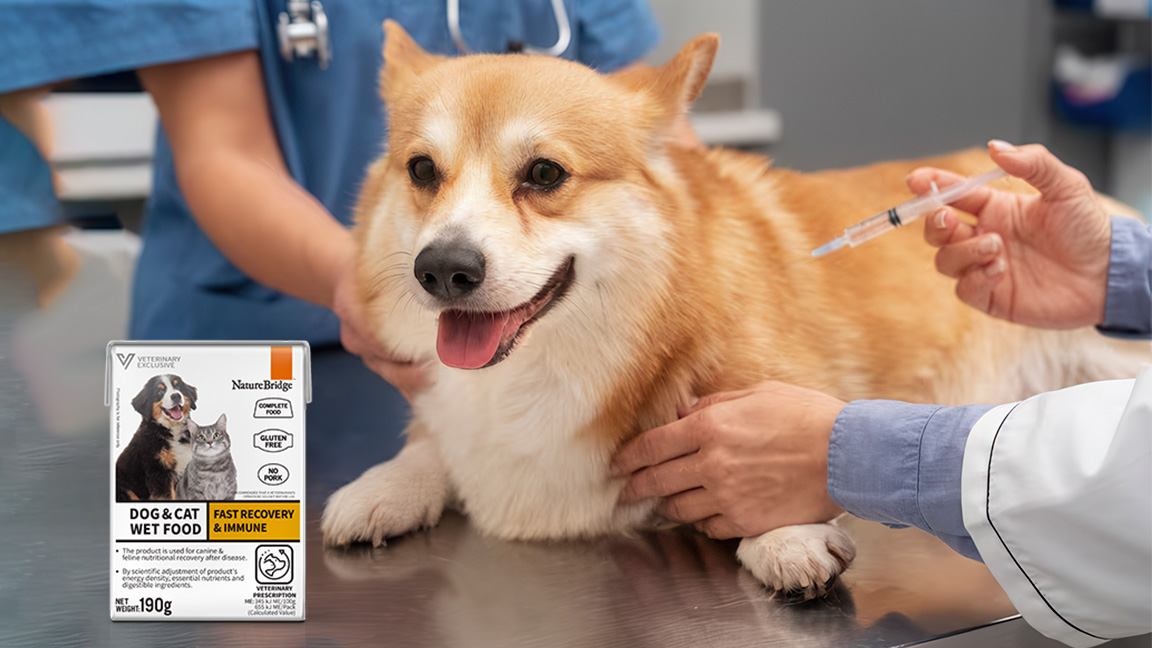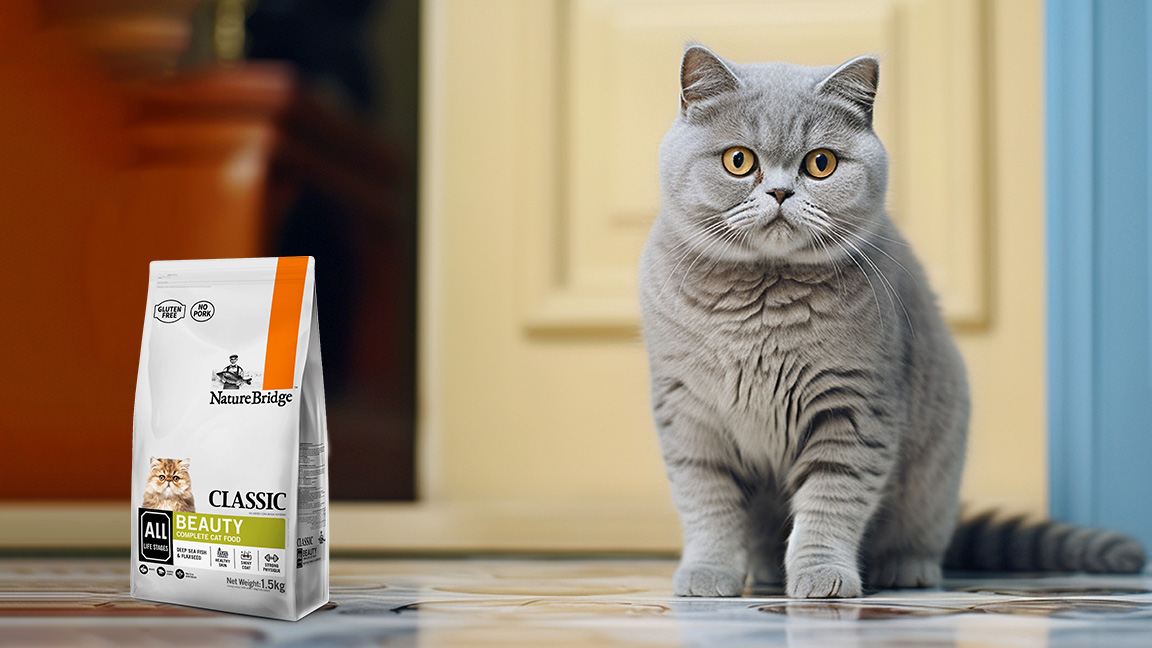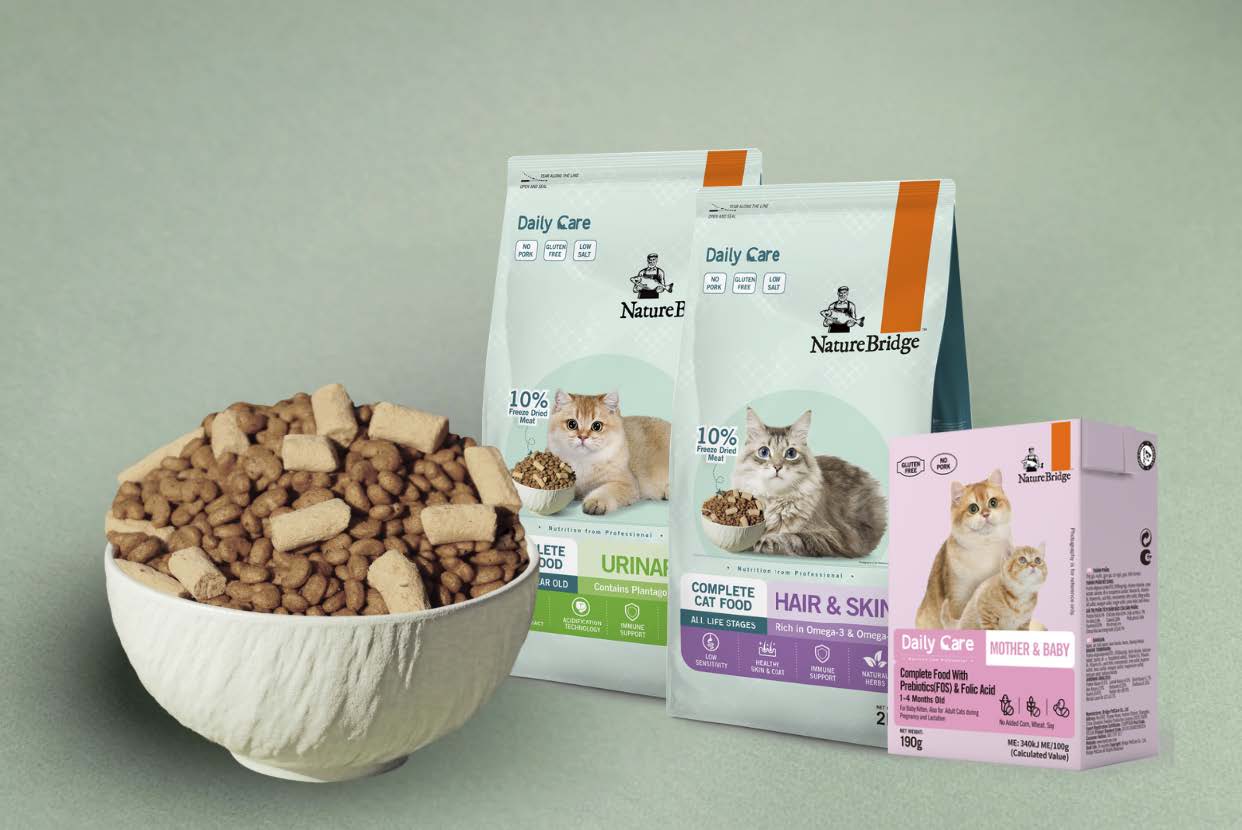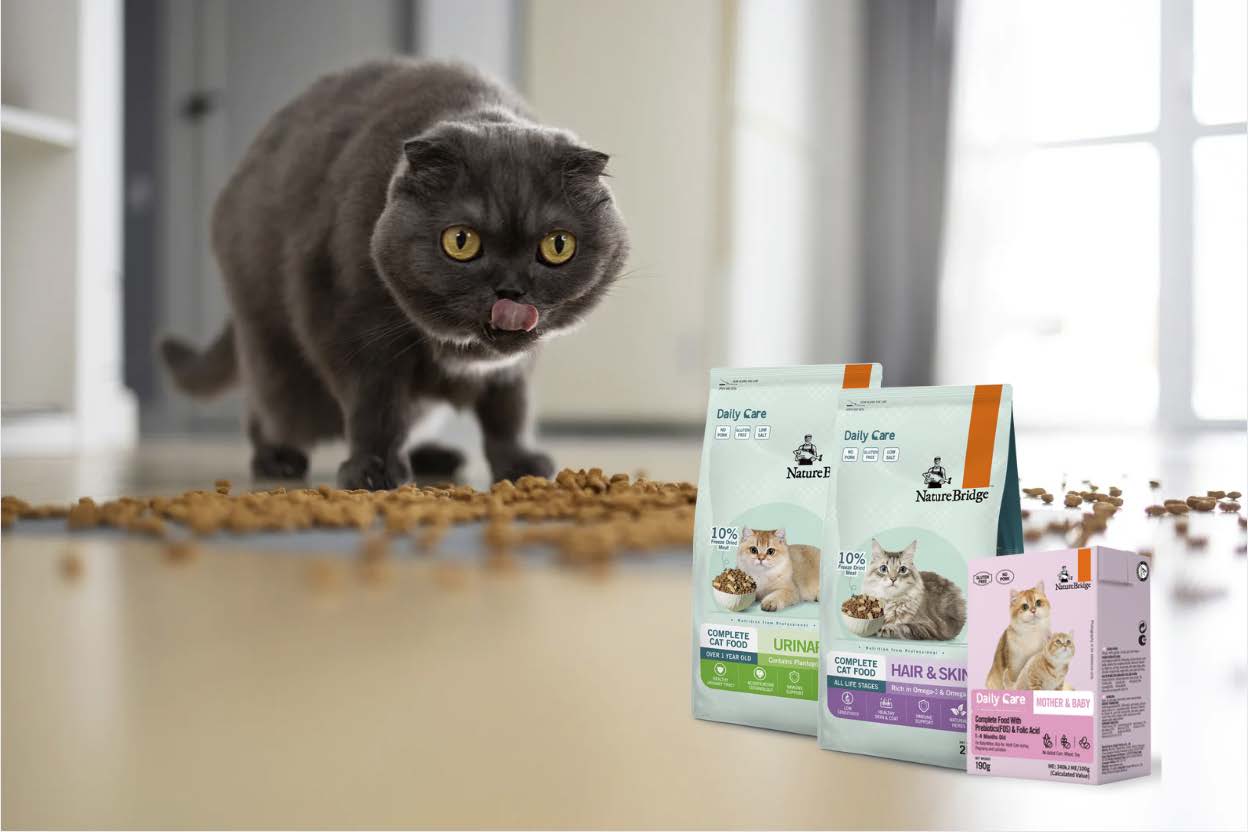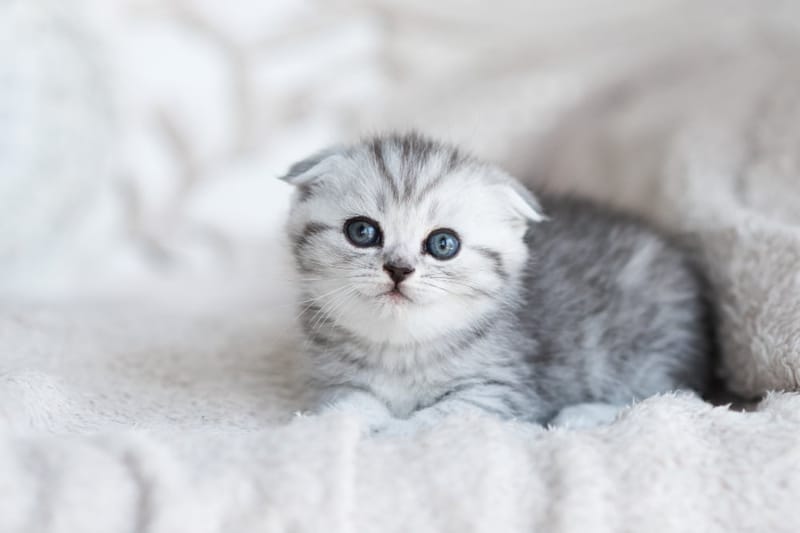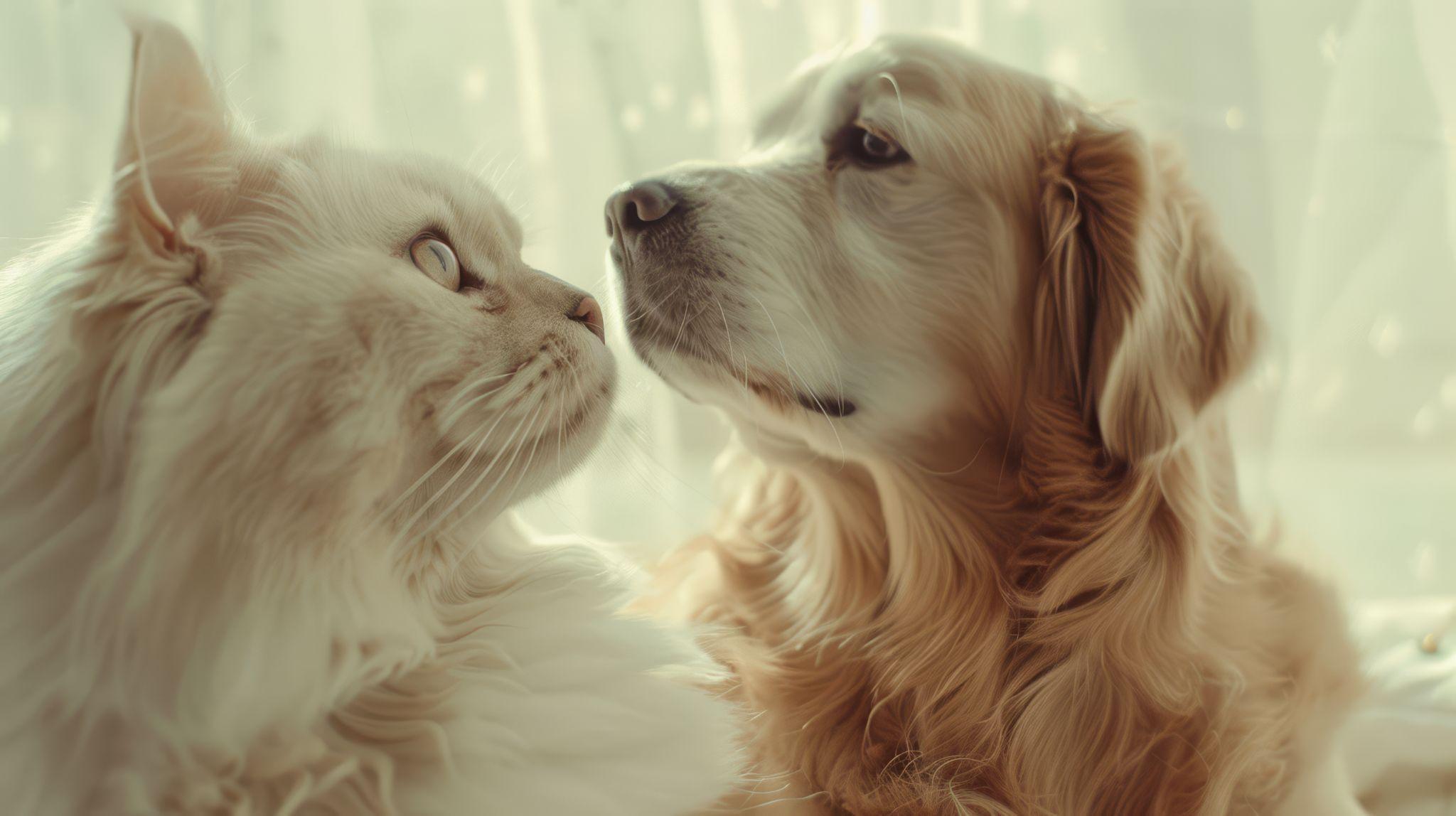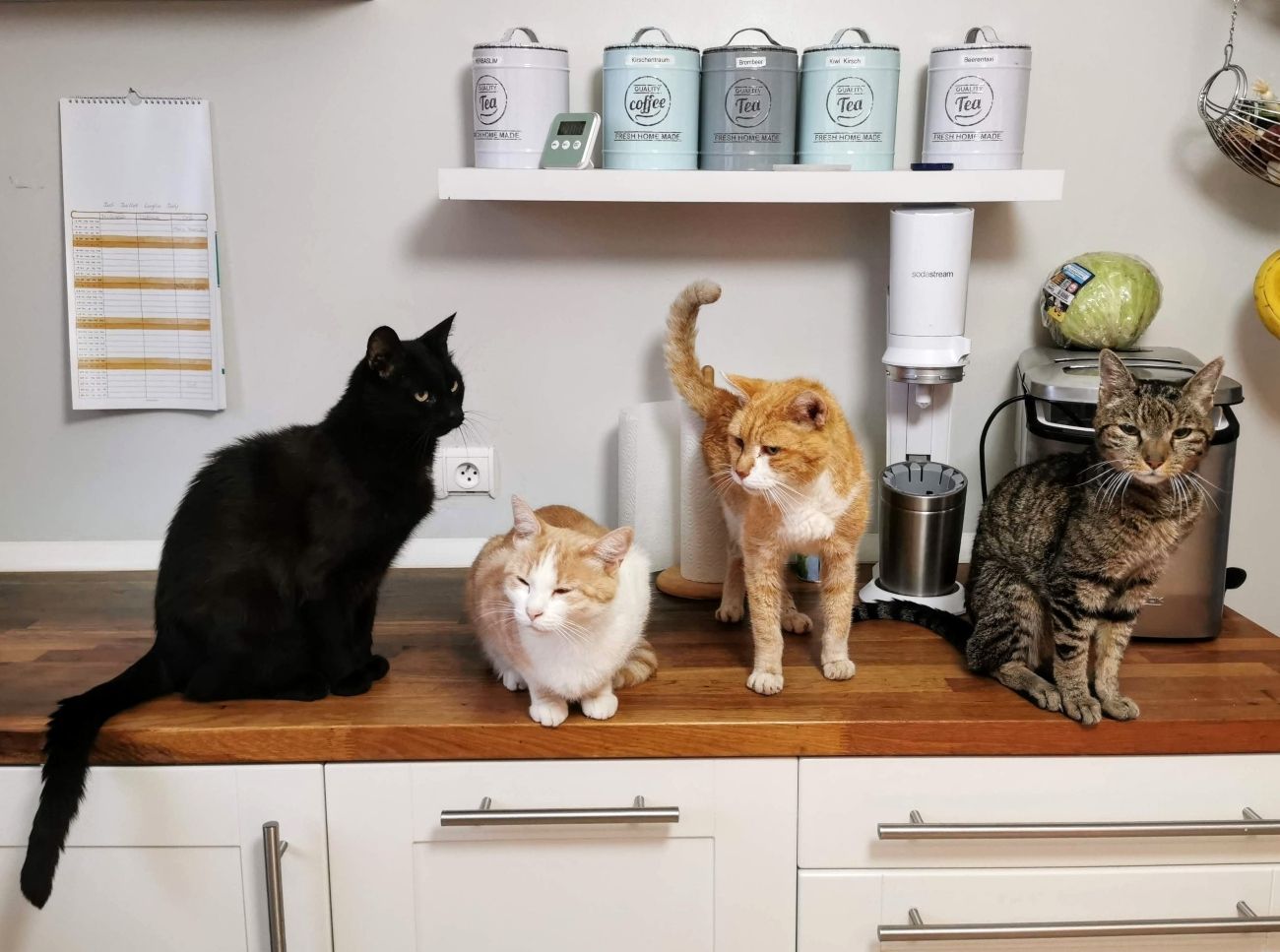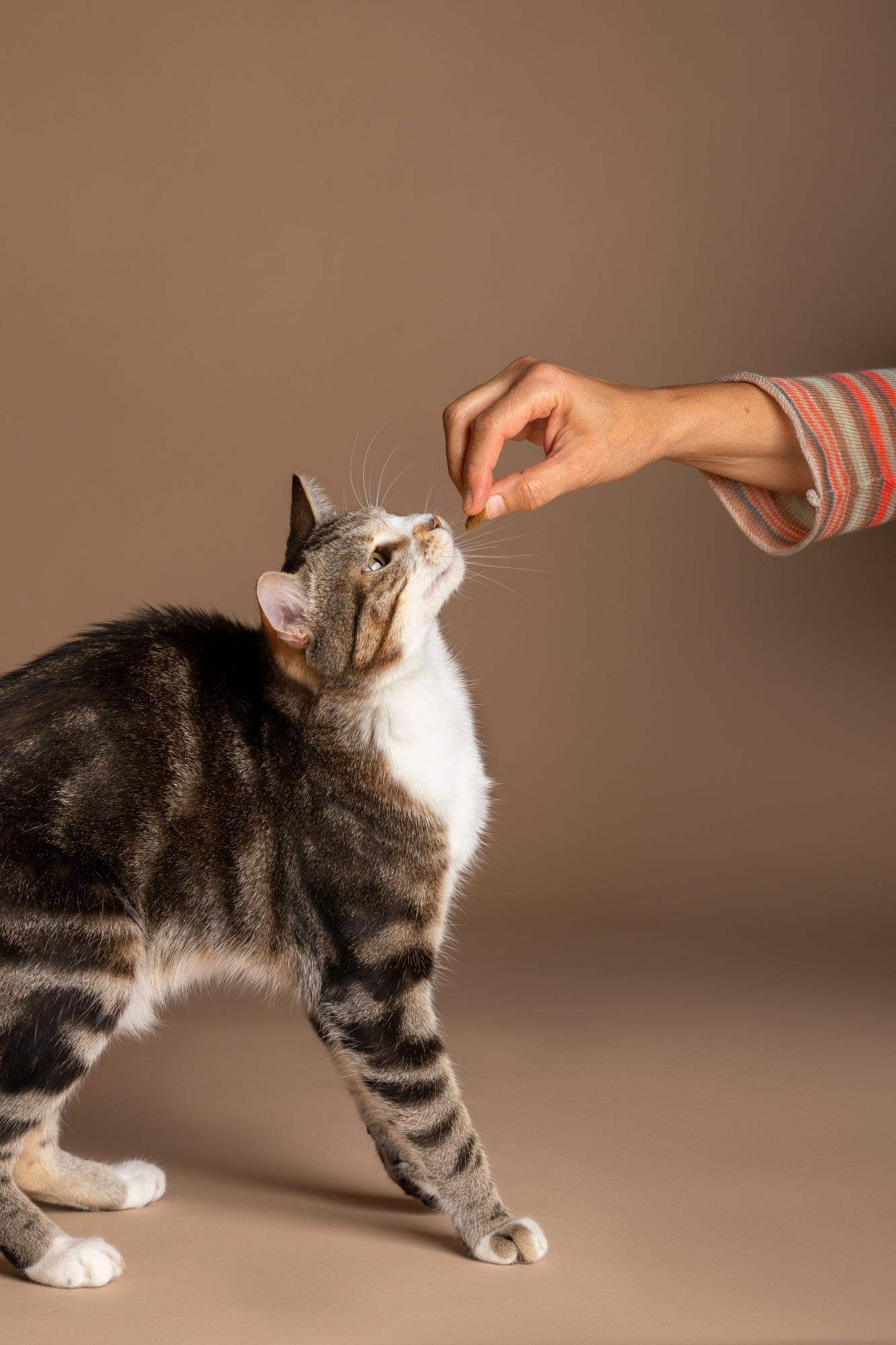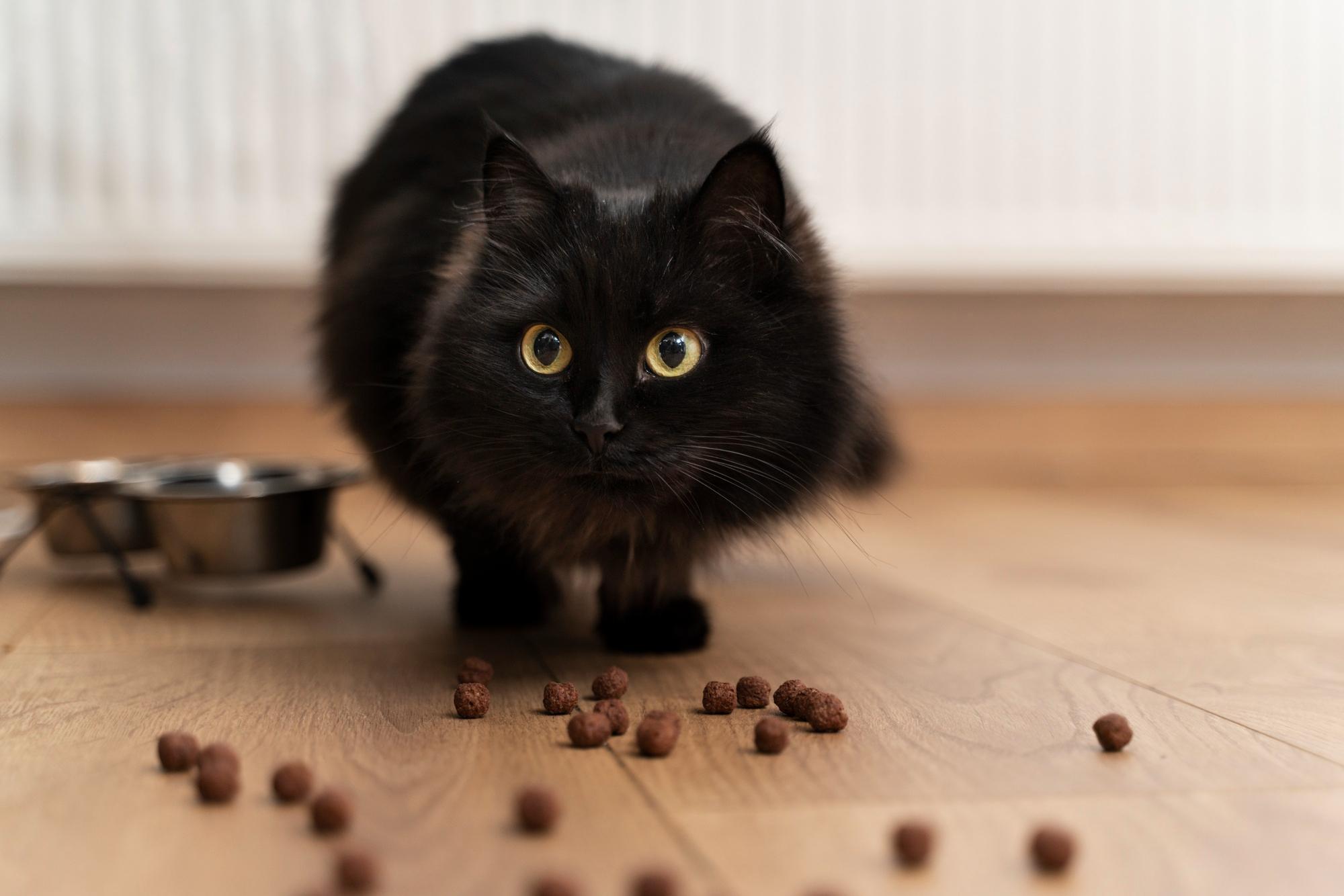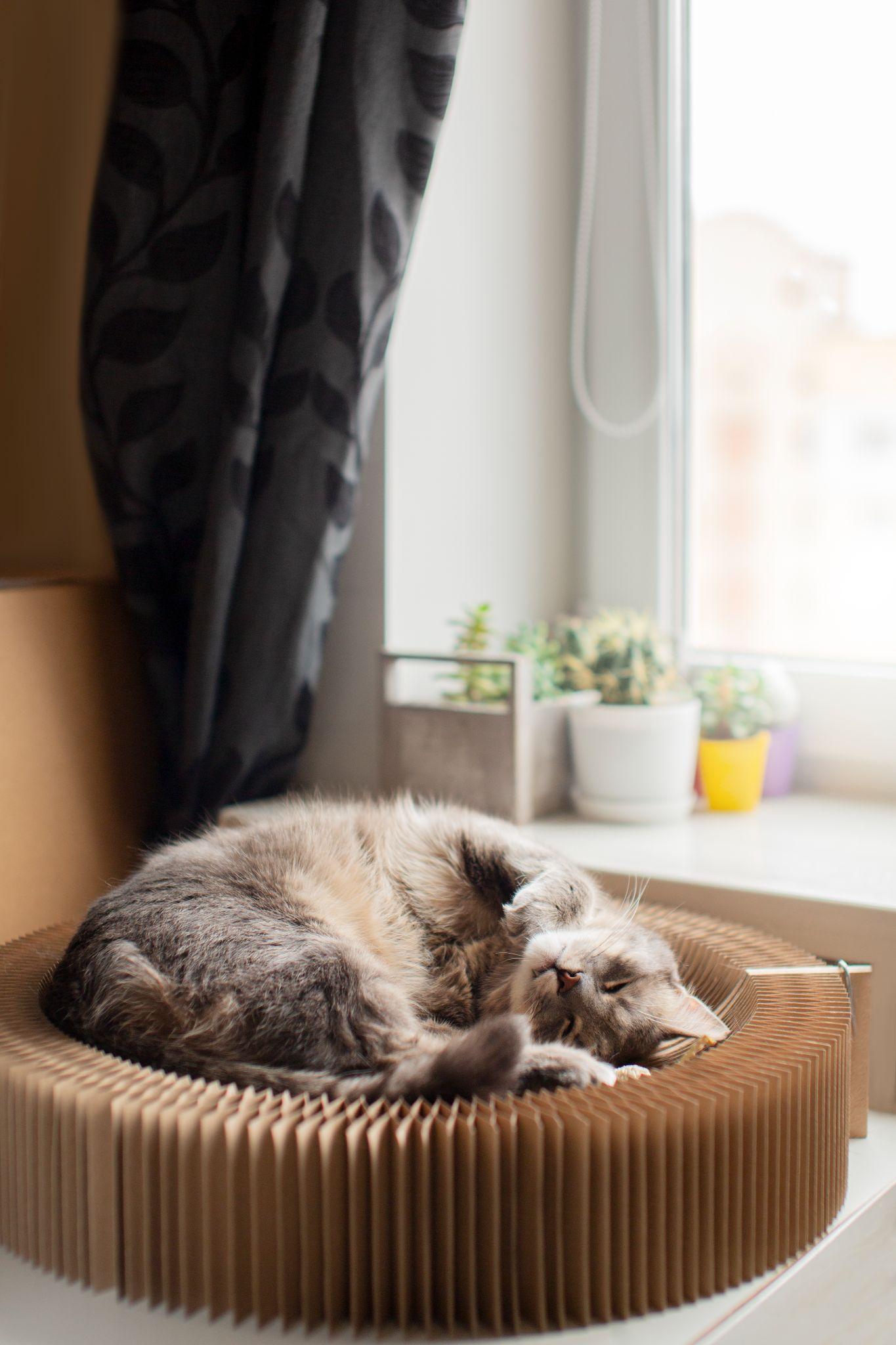If your pet has a sensitive stomach, mealtimes can turn into a daily guessing game. The right food can make all the difference — calming their digestion, reducing discomfort, and improving their overall well-being.
Pets with sensitive stomachs often react poorly to low-quality fillers, artificial additives, or sudden diet changes. For both dogs and cats, it’s best to feed them easily digestible, high-quality protein sources like chicken, turkey, lamb, or salmon. Avoid proteins that are heavily processed or mixed with artificial flavors.
Look for pet food labeled as “limited ingredient” or “sensitive stomach.” These typically contain fewer ingredients, which can help identify and reduce potential irritants. Ingredients like pumpkin, sweet potato, and rice are gentle on the digestive tract and provide natural fiber that helps firm up stools.
Cats benefit from moisture-rich diets (like wet food or raw food) since they’re less inclined to drink water. Dogs may do well on specialized kibble that includes probiotics and prebiotics for gut balance. Whatever the food, make sure any changes happen gradually over 7–10 days to avoid shock to the system.
Tips for Feeding a Sensitive Pet:
Introduce new food slowly by mixing it with the old one over several days.
Avoid giving table scraps, dairy, or fatty human foods.
Stick to a regular feeding schedule — irregular meals can cause upset.
Try single-protein diets to isolate allergy triggers.
Always provide access to fresh water to support digestion.
Conclusion: Gentle Food, Happy Belly
Finding the right food for a sensitive-stomached dog or cat may take a little trial and error, but the payoff is worth it. A calm gut leads to a calmer, more comfortable pet. Stick with gentle, consistent nutrition and you’ll both feel the difference at mealtime and beyond.
Vaccination is one of the most important ways to keep pets healthy and free from dangerous diseases. Both dogs and cats need vaccines from an early age, and they need to be scheduled regularly.
Here is a complete guide to basic vaccinations for dogs and cats in Indonesia:
Mandatory Vaccines for Dogs
| Jenis Vaksin | Usia Pemberian | Keterangan |
| Parvo & Distemper | 6-8 Weeks | First vaccine |
| DHPP | 8-12 Weeks | Mixed: Distemper, Hepatitis, Parvovirus, Parainfluenza |
| Rabies | > 3 Months | Mandatory (according to regulations in Indonesia) |
| Booster DHPP | after 1 Year of first vaccination | Then 1x a year or according to doctor's advices |
| Booster Rabies | after 1 Year of first vaccination | Then every 1–3 years |
Mandatory Vaccines for Cats
| Jenis Vaksin | Usia Pemberian | Keterangan |
| Tricat (FVRCP) | 8-9 Weeks | Feline Viral Rhinotracheitis, Calicivirus, Panleukopenia |
| Rabies | > 3 Months | Mandatory in some areas |
| Booster Tricat | 3–4 Weeks after first vaccine | Then once a year |
| Booster Rabies | 1 Year after first vaccine | Then every 1–3 years |
Importance Vaccination:
- Prevents deadly diseases such as rabies, parvovirus, distemper, panleukopenia.
- Keeps animals healthy in the long term.
- Protects other animals and humans (zoonosis).
- Usually needed for boarding, grooming, or pet daycare.
Important Tips:
- Keep the vaccination book as a medical record.
- Do not bathe the animal for at least 5 days after vaccination.
- If the animal is sick or stressed, postpone vaccination.
When to See a Vet?
Consult a veterinarian immediately if:
- Do not know the correct vaccination schedule
- There is a reaction after vaccination such as fever, weakness, or swelling
- Adopting a new animal that has never been vaccinated
Therefore, vaccination is a long-term investment for the health and well-being of pets. Don't delay or ignore it — give them maximum protection early on. NatureBridge comes with the Recovery Immune variant to help your pet recover when sick and also maintain their immune system. Get NatureBridge Recovery Immune at your nearest veterinary clinic.
Cats that live indoors are indeed safer from external dangers such as accidents or diseases from wild animals. But that doesn't mean they don't need special attention. Without proper stimulation and care, indoor cats can become stressed, obese, or even easily get sick.
Let's take a look at some important tips to keep your indoor cat healthy and happy!
1. Provide Daily Mental Stimulation
Indoor cats can get bored if they are not given activities. Boredom = stress = destructive behavior (such as scratching furniture, meowing constantly).
Tips:
- Provide interactive toys such as laser pointers, small balls, or puzzle feeders.
- Change toys regularly so they don't get bored.
2. Create a Climbing Area and Perch
Cats love to climb and look from high places — this is their natural instinct.
Tips:
- Use a cat tree or special shelf.
- Place near a window so the cat can see outside.
3. Maintain Diet and Weight
Because they are less physically active than outdoor cats, indoor cats tend to be overweight.
Tips:
- Use the amount of food recommended by your veterinarian.
- Avoid too many treats.
- Consider special food for indoor cats.
4. Clean the Litter Box Regularly
Cats are very particular about cleanliness. A dirty litter box can cause them stress or even cause them to defecate indiscriminately.
Tips:
- Clean the litter every day.
- Change the litter and clean the box completely once a week.
5. Check Your Health Regularly
Even though they live indoors, cats still need vaccinations, deworming, and dental check-ups.
Tips:
- Take them to the vet at least 1-2 times a year.
- Observe any changes in behavior or physical appearance, no matter how small.
Therefore, domestic cats can live longer and healthier if given a stimulating environment, a balanced diet, and regular care. Don't just provide a safe place to live, also provide a quality life for your furry friend, one of which is by providing good food such as NatureBridge. Super premium pet food that supports your pet's health. Get NatureBridge at the official CPPETINDO store
Gluten-free diets aren’t just a human health trend—they’re gaining popularity among pet parents too. While not every dog or cat needs to avoid gluten, some pets experience noticeable improvements in their overall wellness after making the switch.
1. Improved Digestive Health
One of the biggest benefits of gluten-free pet food is its positive impact on digestion. Pets with gluten sensitivities may suffer from bloating, gas, or irregular stools. Removing gluten can help reduce inflammation in the gut and support more consistent digestion, especially for pets with sensitive stomachs.
2. Relief from Food Allergies and Intolerances
Some pets have allergies or intolerances to gluten-containing grains like wheat. Symptoms can range from itchy skin and ear infections to vomiting or diarrhea. A gluten-free diet eliminates these potential triggers, offering relief and reducing the risk of recurring health issues.
3. Healthier Skin and Shinier Coat
If your pet has chronic skin conditions—like dryness, redness, or constant scratching—it might be linked to their food. Gluten-free diets that focus on clean, whole ingredients can help reduce skin inflammation, leading to a shinier coat and less discomfort.
4. Boosted Energy Levels
When pets aren’t battling inflammation or digestive distress, they often show a noticeable increase in energy. Gluten-free diets can improve nutrient absorption, allowing pets to feel more energetic, playful, and alert throughout the day.
5. Reduced Risk of Chronic Health Conditions
For pets with autoimmune disorders or inflammatory bowel diseases (IBD), gluten can be a hidden aggravator. Going gluten-free may help reduce chronic inflammation and support long-term gut and immune health, giving these pets a better quality of life.
6. Easier Weight Management
Some gluten-free foods are made with lower-glycemic ingredients and fewer fillers, which can support healthy weight maintenance. This is especially useful for pets that need to lose a few pounds or maintain a balanced metabolism.
Conclusion
Whether your pet struggles with digestion, allergies, or energy dips, switching to gluten-free food could be a game-changer. While not a cure-all, it offers a clean, nutrient-rich approach to pet nutrition that supports overall well-being—especially for sensitive pets.
You’ve probably seen “gluten-free” labels on everything from bread to dog biscuits—but what does it actually mean when it comes to pet food? Just like for humans, gluten-free pet food excludes specific proteins found in certain grains. But not all grains contain gluten, and not all pets need to avoid it.
What Is Gluten, Exactly? Gluten is a type of protein found in grains like wheat, rye, and barley. While it helps give structure and elasticity to baked goods, some animals (and people) have trouble digesting it. In pet food, gluten often shows up in wheat-based ingredients or by-products like wheat gluten meal.
Gluten-Free vs. Grain-Free—What’s the Difference? It’s easy to confuse the two, but they’re not the same. A gluten-free diet can still contain grains like rice or oats, which don’t contain gluten. Grain-free, on the other hand, removes all grains—gluten-containing or not. So gluten-free pet food may still have rice or millet, while grain-free avoids all grain-based ingredients.
Why Go Gluten-Free for Pets? For most pets, gluten isn’t harmful. But some dogs and cats may have sensitivities or allergies that cause itchy skin, chronic ear infections, or digestive problems. Going gluten-free can help reduce inflammation and improve gut health—especially in sensitive breeds or pets with known food allergies.
Who Benefits Most from Gluten-Free Diets? Pets that show signs of food intolerance (like gas, bloating, or skin issues) may benefit from gluten-free food. Breeds like Irish Setters, some terriers, and retrievers are more likely to have sensitivities. A gluten-free diet can also help pets with inflammatory bowel issues or autoimmune disorders.
How to Tell If Pet Food Is Gluten-Free Check the ingredient label carefully. Look out for wheat, barley, rye, or any ingredient with "gluten" in the name. Some brands label their food “gluten-free,” but it’s still important to read closely. Rice, corn, and oats are gluten-free unlesscross-contaminated, so choose trusted brands.
Is Gluten-Free Pet Food Just a Trend? Not necessarily. While it’s become more popular thanks to human diet trends, many pet owners see real improvements in their pets’ health after switching. That said, it’s not necessary for every pet—only those with sensitivities. It’s always best to consult your vet before making dietary changes.
Conclusion
Gluten-free pet food offers a great alternative for pets with sensitivities or allergies. While it’s not a must for every animal, understanding what gluten is—and how to avoid it—can help you make better decisions for your pet’s health and happiness.
Ready to give the best for your pet? Explore our selection of high-quality gluten-free pet foods, specially formulated for digestive comfort and optimal health. Visit our official store on Shopee at https://s.shopee.co.id/6KribOTgeo and discover products designed to meet your loyal companion’s nutritional needs.
As a pet owner, recognizing the early signs that your dog or cat is unwell is essential to prevent more serious conditions. Here are five common signs that your pet may be sick, along with tips on how to treat them.
1. Behavioral Changes
If your pet suddenly becomes quiet, aggressive, or seems unmotivated, this could be a sign of a health problem. They may be uncomfortable or in pain.
Tips: Observe their behavior for 1-2 days. If it continues, consult a veterinarian immediately.
2. Decreased Appetite
A drastic decrease in appetite, or even stopping eating altogether, could be a sign of digestive problems, infections, or other illnesses.
Tips: Try giving your pet their favorite food. If they are still not interested within 24 hours, see a veterinarian immediately.
3. Digestive Problems (Vomiting/Diarrhea)
Vomiting or diarrhea can be caused by a variety of things, from unsuitable food to viral or bacterial infections.
Tips: Make sure your pet stays hydrated. If symptoms last more than 1 day or are accompanied by blood, seek medical attention immediately.
4. Changes in Fur or Skin
Itchy, red, bumpy skin, or excessive hair loss can be signs of allergies, fungal infections, or other problems.
Tips: Do not use human products on your pet's skin problems. Use a shampoo specifically for animals and consult a vet if it does not improve.
5. Difficulty Walking or Seeming Weak
If your pet seems limping, weak, or unwilling to move, there may be an injury or joint problem.
Tips: Avoid forcing movement. Let it rest and take it to the vet for further examination.
When to See a Vet?
Don't wait too long. If your pet's symptoms do not improve within 24-48 hours, seek professional help immediately. The sooner it is treated, the greater the chance of a speedy recovery.
LADIES, having pets like cats is indeed enjoyable, isn’t it? Their cute appearance invites affection. Not to mention their funny and affectionate behavior, which serves as stress relief. Often, a strong bond of love forms between owners and their cats, leading to the term anabul (furry child) for these beloved pets.
One important aspect of keeping cats is paying attention to their diet. The health and well-being of a cat depend on the nutrition they receive daily. Good food not only maintains a cat's overall health but also helps prevent and treat various diseases. Here are some things to consider when choosing cat food products.
Understand Your Cat’s Nutritional Needs
Cats are carnivores and require meat to meet their nutritional needs. The primary nutrient in cat food should be animal protein. High-quality protein sources include chicken, beef, fish, and liver. Protein is the main component of a cat’s diet and is essential for muscle building and tissue repair. Besides protein, cats also need fats, carbohydrates, vitamins, and minerals.
Read Labels Carefully
When choosing cat food, it’s important to read the packaging labels carefully. The label provides information about the nutritional content and ingredients used. Ensure that the main ingredient is a source of animal protein, such as chicken, beef, or fish. These ingredients should be listed at the top of the ingredients list. The food should contain balanced amounts of protein, fat, carbohydrates, vitamins, minerals, and fiber.
Some cat foods may include fillers like corn, wheat, or soy, which are low in nutrients and less essential for cats. Avoid products that list these ingredients in large quantities. Also, avoid artificial coloring, flavoring, and chemical preservatives.
Consider Age and Health Conditions
Cats have different nutritional needs depending on their age and health. Choose food that suits your cat’s life stage. For example, kittens require food high in protein and fat to support their growth and development. Adult and senior cats have different needs, especially those with specific health issues.
Bridge Petcare Founder Jerry Xu explained that Indonesia’s tropical climate and high humidity, combined with cats’ natural tendency to dislike drinking water, make them prone to skin and fur diseases, as well as urinary tract issues. “According to surveys conducted at several veterinary clinics in Indonesia, skin, fur, and urinary tract diseases are common problems in cats,” said Jerry.
Cat owners, he continued, can utilize food products specifically formulated for cats with certain health issues. For example, NatureBridge’s latest Daily Care series, which was recently launched in Indonesia, includes Hair & Skin to address skin and fur problems, Urinary for cats with urinary tract issues, and Mother & Baby for pregnant, nursing cats and kittens.
“The Daily Care series is functional daily pet food that uses freeze-drying technology, where real meat is frozen at -38 degrees Celsius for 26 hours. Hopefully, with high-quality food tailored to their age and health conditions, pet owners and their beloved cats can live healthier, happier lives and grow old together,” Jerry added.
Monitor Your Cat’s Reaction
Don’t forget to carefully monitor your cat’s reaction when introducing new food. Observe changes in their activity levels, coat condition, and digestion. Signs that the food suits your cat include them being active and energetic, with healthy fur growth. Thick, soft, and shiny fur indicates adequate nutrition. Additionally, check their digestion—normal stools without a strong odor suggest the food is suitable for your cat’s digestion. If your cat shows signs of allergies or digestive problems, consult a veterinarian immediately and consider switching their food.
(Source: https://mediaindonesia.com/jelita/688378/jaga-kesehatan-kucing-kesayangan-dengan-makanan-tepat)
TRIBUNNEWS.COM, JAKARTA – Having pets is one of the activities that is both enjoyable and beneficial for health.
In terms of types, the most commonly owned pets among Indonesians are cats, followed by birds, fish, and dogs.
According to survey results, 47% of Indonesians own cats, which aligns with a Kompas Research and Development poll conducted in January 2020.
Cats' adorable behavior and cute appearance make them appealing to be kept as pets.
Many influencers even adopt and care for domestic cats, turning them into extremely cute and well-maintained pets.
According to the International Federation for Animal Health Europe (IFAH), there are approximately 220 million domestic cats worldwide.
In addition to being household pets, it has also become a trend for pet owners to take their beloved pets to places like shopping malls.
“There are also more pet-friendly malls now that provide facilities like open park areas for pets to walk around,” said Jerry Xu, the Owner of Bridge PetCare, during the launch of the latest Daily Care series featuring three products: Nature Bridge Hair & Skin, Urinary, and Mother & Baby in Jakarta on Thursday (July 25, 2024).
This fact proves that the growth of pet lovers in Indonesia is increasing, making pet shop businesses a promising opportunity as the number of pet lovers continues to rise.
However, on the other hand, cats sometimes face health issues.
“Especially with Indonesia’s tropical climate and high humidity, combined with the fact that cats naturally dislike drinking water, this can trigger health problems,” said Jerry.
He explained that based on internal surveys conducted in veterinary clinics across Indonesia, fur and skin diseases as well as urinary tract infections are the most common illnesses experienced by cats.
This has also encouraged Nature Bridge to introduce its latest Daily Care series, functional daily pet food that uses freeze-drying technology to process real meat at a temperature of -38°C for 26 hours.
“We hope that pet owners and their beloved pets can live healthier, happier lives, and grow old together,” Jerry concluded.
Sources: https://www.tribunnews.com/lifestyle/2024/07/26/iklim-tropis-indonesia-dan-kelembaban-yang-tinggi-berdampak-pada-kesehatan-kucing
The article discusses the importance of considering the potential health risks of feeding dogs grain-free diets and consulting with a veterinarian to ensure that dogs receive all necessary nutrients in their diet, as some grain-free dog foods may be lacking in important nutrients such as taurine, which could lead to health problems such as dilated cardiomyopathy. The article recommends working with a veterinarian to determine the best diet for a dog's individual needs.
At Brook Farm Veterinary Center we think it’s important to take a moment to discuss the topic of grain-free dog food.
While some pet owners may choose to feed their dogs grain-free diets for various reasons, such as food allergies or personal preferences, it's important to understand that grain-free diets may not be the healthiest option for all dogs.
Firstly, it's important to note that grains are not inherently bad for dogs. In fact, many grains, such as rice and oats, can provide important nutrients and fiber that are beneficial for a dog's health. Commercial grain-free dog foods may also substitute grains with other ingredients, such as potatoes or peas, which can also cause health issues if overused.
One of the concerns with grain-free diets is the potential link to a heart condition called dilated cardiomyopathy (DCM). While the exact cause of DCM is still under investigation, there is evidence to suggest that a diet lacking certain nutrients, such as taurine, may be a contributing factor. Grain-free diets often contain novel protein sources, which can make it difficult for dogs to get enough taurine and other nutrients.
At Brook Farm Veterinary Center, we always recommend consulting with your veterinarian before making any significant changes to your dog's diet. Our team of experienced veterinarians can help you determine the best diet for your dog's individual needs, taking into consideration factors such as age, breed, and any medical conditions they may have.
In conclusion, while grain-free diets may be suitable for some dogs, it's important to carefully consider the potential health risks and to work with a veterinarian to ensure that your dog is getting all the necessary nutrients in their diet.
It’s true what they say about pets being with us for a “good time, not a long time,” so we are here with some tips on how to extend the life and wellbeing of your pet!
1. Maintain your pet’s teeth: Tooth decay is a very common, yet dangerous health problem for both dogs and cats. Did you know that tooth decay not only creates dental problems, but it can cause infections throughout the body, especially in the heart and kidneys? This is a commonly overlooked health issue our pets experience which can turn fatal, so it’s best to stay on top of your pet’s dental health and incorporate daily brushing into your pet care routine.
Are you wondering how to get your pet acclimated to daily tooth brushing? At Brook Farm Veterinary Center we recommend brushing your pet's teeth at least a couple of times per week to help keep them clean. Please do not use human toothpaste as it has ingredients that are harmful to our pets. There are pet specific toothpastes and toothbrushes you can purchase to get the job done safely. If your pet has noticeable buildup of plaque, then you should book a dental appointment with Brook Farm’s team of experienced staff as soon as you have time!
2. Keep your pet at their ideal weight: Obesity is a nationwide crisis, not only affecting humans, but our furry companions too. Work with your veterinarian to determine your pet’s ideal weight. Once that ideal weight is established you can easily maintain that weight by keeping track of how much they eat and how often they exercise on a regular basis.
3. Give your pet regular exercise: Dogs need to exercise the same way people do. Ideally, your dog should get at least an hour of exercise each day to improve their overall health and help regulate their weight. This can be in the form of walks in your neighborhood, visits to the local dog park, doggy daycare, or playing a couple games of fetch outside. Cats on the other hand are known to be less active than dogs. A couple ways you can entice your cat to exercise would be to use catnip to get them running around, getting a cat tree that they can climb on, and playing with lasers that they will surely try to catch!
4. Get regular exams and essential vaccinations: The early phase of a serious condition can quietly develop inside a perfectly healthy-looking dog or cat. And since pets age faster than we do, their diseases can also advance more quickly. This is the main reason that getting your pet to the veterinarian for regular exams and staying on top of their essential vaccines are crucial.
5. Give your pet time to relax: Everyone needs time to relax; this includes our pets. It’s important to remember that as much as we crave a good work / life balance, our pets require a good balance too. It takes a lot of energy to keep us humans entertained, so our furry friends need some time to rest without distractions.
Incorporating all of these elements into your pet parenting routine will help extend your pet’s quality of life. Another way you can show your furry companion you care, is bringing them to a trusted facility, filled with dedicated and caring people.
Pet parents know there are some things that cats shouldn’t eat. What they might not realize is that many more toxins than they know about are present in their cats’ environment. Food, medication, house plants and cleaning products can be dangerous to cats, but our feline friends could access them at any moment.
To prevent poisoning in cats, pet parents should learn about toxic substances and the symptoms associated with them. When you’re more aware of your cat’s surroundings, you’re better equipped to seek medical help if poisoning does occur.
Here are the most common household toxins to watch out for in your home.
Ingredients in human food
Cats are very curious creatures. If they find food, they might want to taste it. A cat may steal bits of food from plates and open containers while their owner is in another room. Some cats have also been known to rummage through trash bins and fish out discarded table scraps. In other cases, a pet parent or guest may inadvertently offer food that’s actually poisonous to cats.
Cats can develop any number of symptoms from eating toxic food. The symptoms range from mild to life-threatening, and they depend on which toxin the cat ingested. For example, cats that eat chocolate may experience vomiting, diarrhea, panting or a rapid heart rate. Garlic often causes anemia in cats, which is characterized by lethargy, fast breathing and yellow gums. Any toxic food can trigger a range of respiratory, neurological and gastrointestinal problems, as well.
The following foods are highly toxic to cats:
- Chocolate
- Garlic
- Onions
- Leeks
- Chives
- Grapes
- Unripe tomatoes
- Raw potatoes
- Alcohol
Indoor and Outdoor House Plants
House plants (both indoor and outdoor) also pose a risk to your cat’s health. Plants are a common cause of poisoning because cats can come into contact with them while the owners aren’t watching. Cats may nibble the flowers, stems or leaves of potted plants sitting on low tables or shelves. Indoor outdoor cats may roam the gardens and come across plant species that are highly poisonous.
Much like with human food, the symptoms of plant poisoning depend on the species that was ingested. For instance, lilies can cause drooling, lethargy, loss of appetite, digestive upset and kidney failure. Generally speaking, many plant species cause inflammation in the skin, throat and mouth. The cat may also experience coughing, sneezing or a red, itchy rash.
Here are some common plants to avoid:
- Lily
- Amaryllis
- Aloe vera
- Daffodil
- Tulip
- Hyacinth
- Pothos
- Poinsettia
Pet and Human Medications
Many cases of poisoning stem from pet and human medications. Owners might accidentally leave open pill bottles on the counter. Some owners will administer human pain killers and probiotic supplements in the hopes that they’ll work on their cats. Humans and cats metabolize substances differently, which means the ingredient levels in human medications are way too high for cats. Even medication designed for cats can lead to poisoning if they’re given in the wrong dose.
Drug poisoning usually causes gastrointestinal symptoms, which include vomiting, diarrhea and general discomfort in the abdominal area. Some cats may also develop a fever, lethargy or a rapid heartbeat. Excessive vomiting and diarrhea often lead to dehydration, a serious side effect of drug poisoning that can quickly turn fatal.
Keep these medications in a safe location away from your cat:
- Aspirin
- Acetaminophen
- Ibuprofen
- Antidepressants
- Melatonin
- Supplements
- Flea and tick treatments
Household cleaners and yard products
Household products contain dangerous chemicals that are highly poisonous to cats. They could inhale airborne particles from air fresheners, cleaning sprays or essential oil diffusers. Cats that venture outside could come into contact with fertilizer, pesticides or antifreeze, which they ingest by grooming their fur.
These products can lead to many common signs of poisoning—vomiting, diarrhea, lethargy, fever, dehydration and rapid heartbeat, among others. Some essential oils may cause additional symptoms depending on which plant species they’re derived from. For instance, eucalyptus oil may cause drooling, seizures and confusion, while peppermint oil is linked to liver failure and damage to the nervous system.
Make sure your cat doesn’t come into contact with any of the following products:
- Essential oils
- Fertilizers
- Antifreeze
- Cleaning sprays
- Laundry detergent
- Pesticides
- Rodenticides
Many toxins exist in your cat’s environment. You can keep your cat safe by recognizing which substances are poisonous and placing them in hard-to-reach locations. Even still, there’s always a chance poisoning could occur, so it’s important to know the symptoms and report them to your vet right away. Acting fast can save your cat’s life!
Source: https://petwellbeing.com/
No matter how long you’ve been a cat parent, deciphering your feline friend’s emotions can sometimes feel like trying to solve a complex puzzle. Our four-legged companions have a unique language of their own. Thankfully, with a little insight, you can learn to read the signs that indicate when your cat is happy, content and thriving. From subtle body language to joyful behaviors, discover the fascinating world of feline happiness.
Reading the signs of a happy cat
How can you tell if your furry friend is comfortable and happy? Here are the telltale signs you’re raising a joyful cat.
Relaxed body language: A relaxed and happy cat will have soft, smooth fur and a body that is neither tense nor stiff. They might sprawl out comfortably on their side or back, showing that they feel secure and at ease in their environment.
Purring: Ah, the soothing sound of a purring cat. While it’s true that cats purr for various reasons, it’s usually a sign of contentment. If your cat purrs while cuddling with you or when you’re petting them, it’s a clear sign they’re feeling happy.
Playfulness: Playfulness is a strong indicator of a happy cat. Engaging in playful behaviors like chasing toys, pouncing and even “hunting” objects (or you!) around the house suggests that your feline friend is enjoying life and feeling mentally stimulated.
Slow blinking: Cats often express trust and affection through slow blinking. If your cat blinks at you in a slow, deliberate way, they’re essentially sending you a feline kiss. Acknowledge it with a slow blink in return!
Tail position: The position of your cat’s tail can reveal a lot about their mood. A tail held high with a slight curve at the tip (like a question mark) indicates confidence and happiness. A “neutral” posture, with the tail held gently behind them and curved slightly, shows that your cat is content.
Kneading: Kneading—when a cat rhythmically pushes and pulls their paws against a soft surface—is a behavior inherited from kittenhood. It’s a sign of comfort and contentment, often reminding them of nursing from their mother.
Relaxed ears and eyes: Happy cats have relaxed ears that are facing forward or slightly to the side. Their eyes will be half-closed, indicating relaxation and trust.
Signs of feline stress, anxiety or discomfort
While understanding the signs of a happy cat is crucial, it’s equally important to recognize the symptoms of stress and anxiety in your furry companion. Cats are masters of masking illness and stress, but subtle changes in their behavior and body language can help clue you in.
“Airplane” ears: When your cat is scared or distressed, their ears might flatten toward the back of their head or to the side. This is often called “airplane” ears because they resemble the wings of a plane. Puffy or thrashing tail: Your cat’s tail will also indicate aggression, fear and distress. Watch the way it moves—if it’s thrashing back and forth, something might be agitating your furry friend. Cats may also puff up their tails or tuck them when frightened and hold their tail stiff and straight when aggressive.
Aggressive behavior: Uncharacteristic aggression toward you, other pets or even themselves can signal that your cat is experiencing emotional distress. Your cat might growl and hiss, swat or bite to show aggression.
Changes in appetite: A sudden decrease or increase in your cat’s appetite can indicate stress or health issues. Any changes in eating habits should be monitored and addressed right away.
Excessive grooming: Cats may groom themselves more than usual when stressed. Excessive grooming can lead to hair loss, skin irritation and even digestive problems.
Hiding: If your normally social cat suddenly becomes reclusive and spends more time hiding, it’s a sign they might be feeling sick or anxious.
Changes in litter box behavior: Any changes in litter box habits, such as avoiding the litter box or urinating outside of it, can be indicative of underlying stress or health issues.
If you notice signs of anxiety, stress or aggression in your cat, don’t ignore them. Cats get stressed for a variety of reasons—some random and fleeting, and others serious and long-term.
Determine whether you cat’s anxiety is sudden or normal for them. Some cats take time to adjust to new environments and won’t display happy behaviors right away after adoption. Others have chronic anxiety that will require persistent treatment. You might be able to help calm them with environmental enrichment and herbal supplements. Ingredients like chamomile, valerian root and L-tryptophan are known for their calming effects on cats.
However, if your cat is usually happy and relaxed, sudden anxiety might indicate something more serious, like a health problem. Address any household or lifestyle things that might be stressing your cat out, like loud noises or other aggressive pets. Consult with your vet if the anxiety continues to check on their health and build a stress management plan.
Clue in to your cat’s mood
While it’s gratifying to know that your cat is content and happy, it’s equally important to remain attuned to all their emotional needs. By understanding your cat’s body language and behaviors and taking proactive steps to address anxiety and stress, you’ll help them live as happy a life as possible!
Source: https://petwellbeing.com/
Personalized medicine – care tailored to individual needs of patients – is rapidly gaining traction in human health care and veterinarians are embracing the concept as well. The Foundation has several studies in progress that could help veterinarians customize treatment and optimize care for cats.
A core feature of personalized medicine is understanding a patient’s genetic makeup – their DNA. Without this information, it would be difficult, if not impossible, to deliver personalized care.
Since 2006, we’ve funded 52 studies on all aspects of understanding the feline genetic code. Our studies fall into two basic categories: studies looking at genetic mutations associated with specific diseases and studies on determining the genetic sequence (code) of all the DNA present – almost 20,000 genes in our feline friends!
Our researchers found a gene responsible for heart disease in Sphynx cats, a gene linked to the cartilage abnormalities seen in some breeds, and even a suggestion of a genetic link to diabetes.
In addition, our researchers have made a huge contribution to decoding the complete genetic make-up of the cat – a massive feat of genetic wizardry!
Current research includes work on learning more about how genetics influences a cat’s response to clopidogrel, a drug used to prevent deadly blood clots.
Although the cat is finally catching up to the dog when it comes to genetic research, we still have a long way to go. But we’re confident that the secrets we’re unlocking now will make a big impact in the future for feline health.
Stress has negative consequences on the health and well-being of animals, and shelter cats are especially vulnerable to stress-induced health problems such as upper respiratory infections. In addition, stress can make cats exhibit unwanted behaviors, including biting and scratching. Cats that are ill, or have behavior issues, are less likely to be adopted. Sadly, these conditions can lead to euthanasia.
Providing hiding spaces has been proposed as one way to reduce stress in cats in these types of environments. A new study will test this theory by giving shelter cats access to a small, enclosed cat den within their larger kennel space, to see if the addition of this simple tool can improve outcomes for these animals.
"Euthanasia rates for cats in shelters remain stubbornly high, with estimates of up to 70% by some organizations, including the ASPCA," said Dr. Kathy Tietje, Chief Program Officer at Morris Animal Foundation. "We need to take action to help more cats make their way to their forever homes. This study is an important step."
The study is part of a unique partnership with Morris Animal Foundation and the Dumb Friends League, both based in Denver, and EveryCat Health Foundation.
"We’re excited to be conducting a field trial of this simple but potentially powerful intervention," said Katie Parker, Vice President of Sheltering at Dumb Friends League. "We know that improving health has a direct correlation with adoptability. Anything we can do to improve our cats' health is a win for everyone, but especially our cats."




